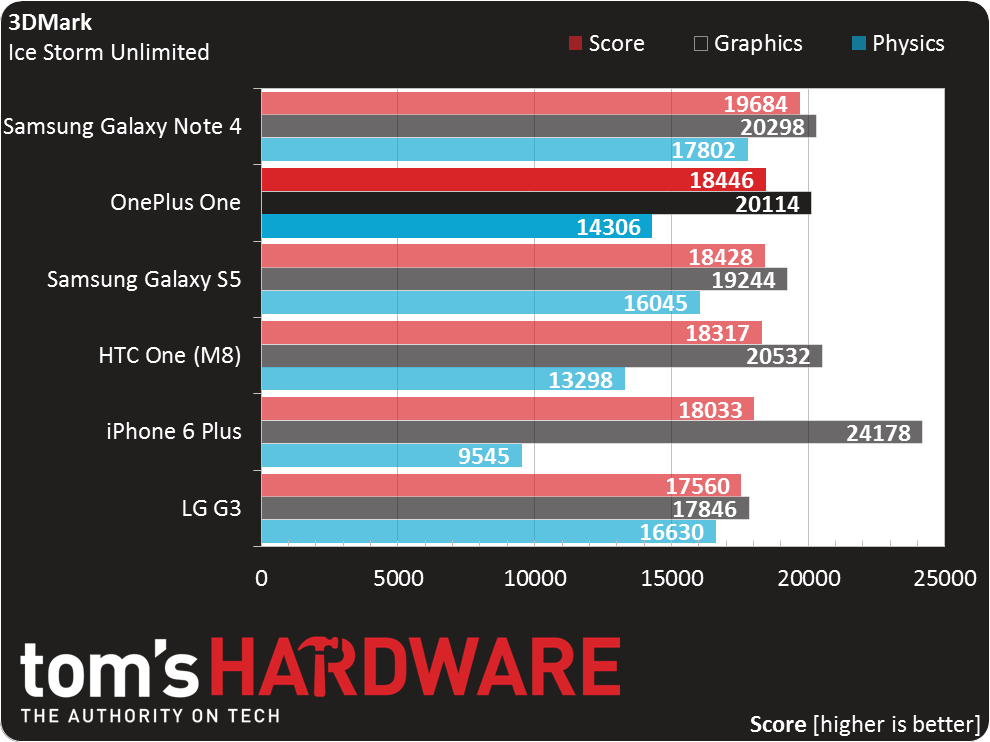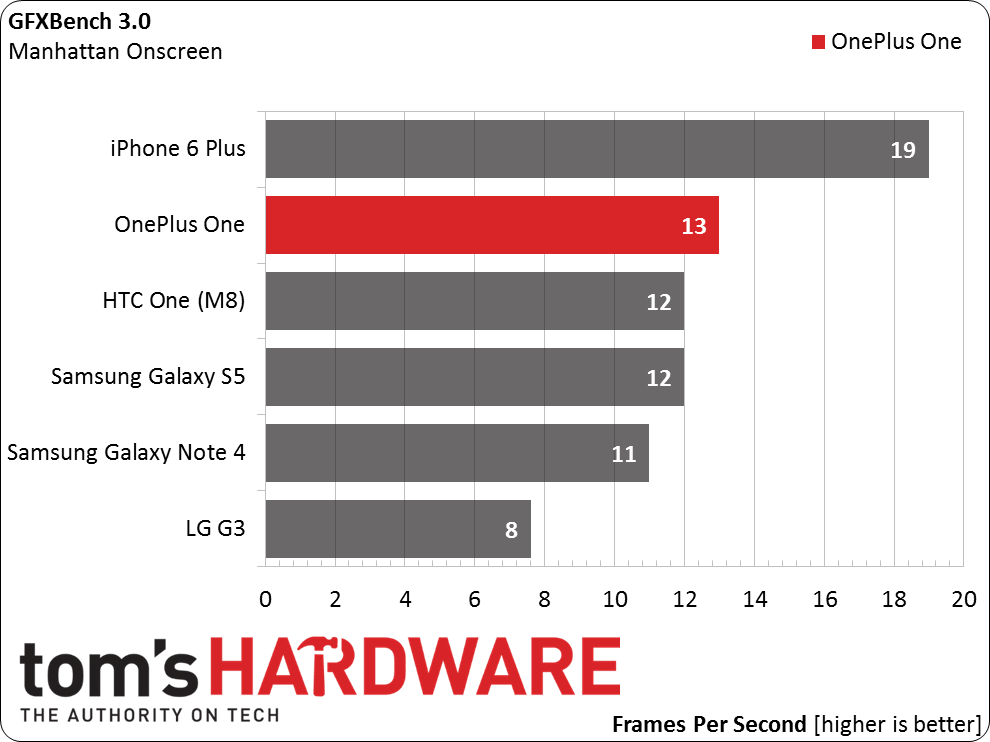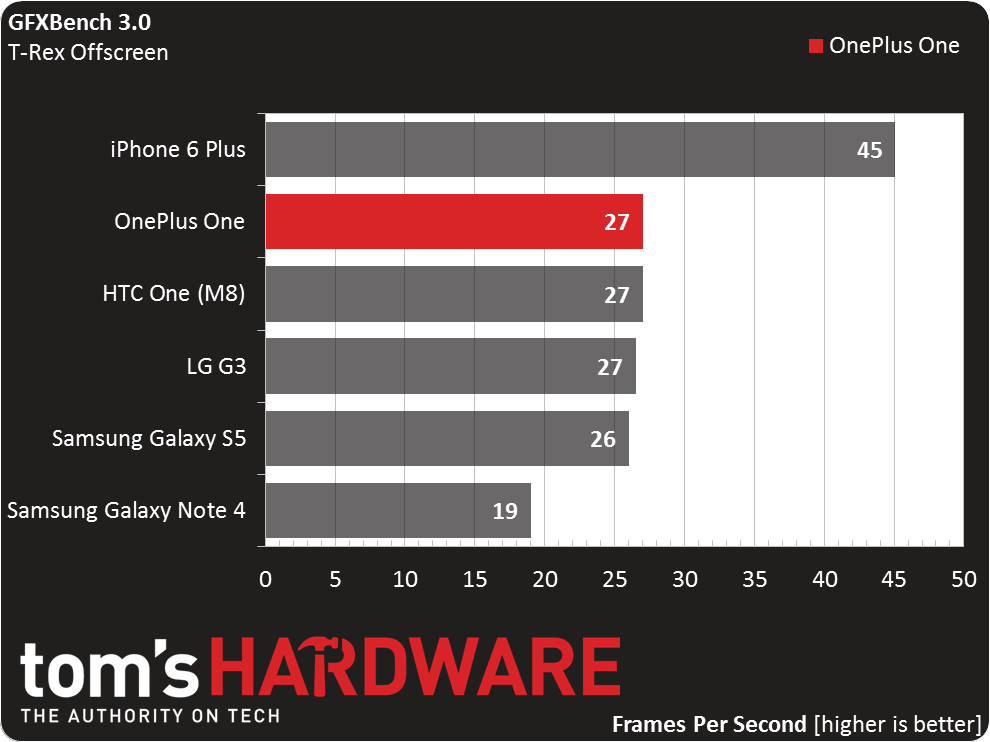OnePlus One Review
The OnePlus One has an off-contract price starting at only $299, but don’t call this smartphone cheap. Hiding behind the OnePlus One’s 5.5-inch HD screen is some high-end hardware.
Why you can trust Tom's Hardware
Results: GPU Core Benchmarks
3DMark (Anti-Detection)
Futuremark has become a name synonymous with benchmarking, and the company's latest iteration of 3DMark offers three main graphical benchmarks: Ice Storm, Cloud Gate and Fire Strike. Currently, the DirectX 9-level Ice Storm tests are cross-platform for Windows, Windows RT, Android and iOS.
Ice Storm simulates the demands of OpenGL ES 2.0 games using shaders, particles and physics via the company's in-house engine. Although it was just released in May of 2013, the on-screen portions of Ice Storm have already been outpaced by modern mobile chipsets, with Nvidia's Tegra 4 and Qualcomm's Snapdragon 800 both easily maxing-out the Extreme version (1080p with high-quality textures). However, Ice Storm Unlimited, which renders the scene off-screen at 720p, is still a good gauge of GPU-to-GPU performance.
The OnePlus One does well in the Graphics test, mirroring the earlier GPU results in our system benchmarks. However, the One falls behind the G3 and Galaxy S5 in the multithreaded, CPU-bound Physics test by almost 15%, the same deficit it shows in the Geekbench 3 Pro multi-core test.
Basemark X 1.1
Based on the Unity 4.0 game engine, Rightware’s Basemark X is a cross-platform graphics benchmark for Android, iOS, and Windows Phone 8. This test utilizes Unity’s modern features via the OpenGL ES 2.0 render path to simulate how a modern game might look and run. Basemark X is an aggressive test that still hasn’t been maxed out by the latest mobile SoCs.
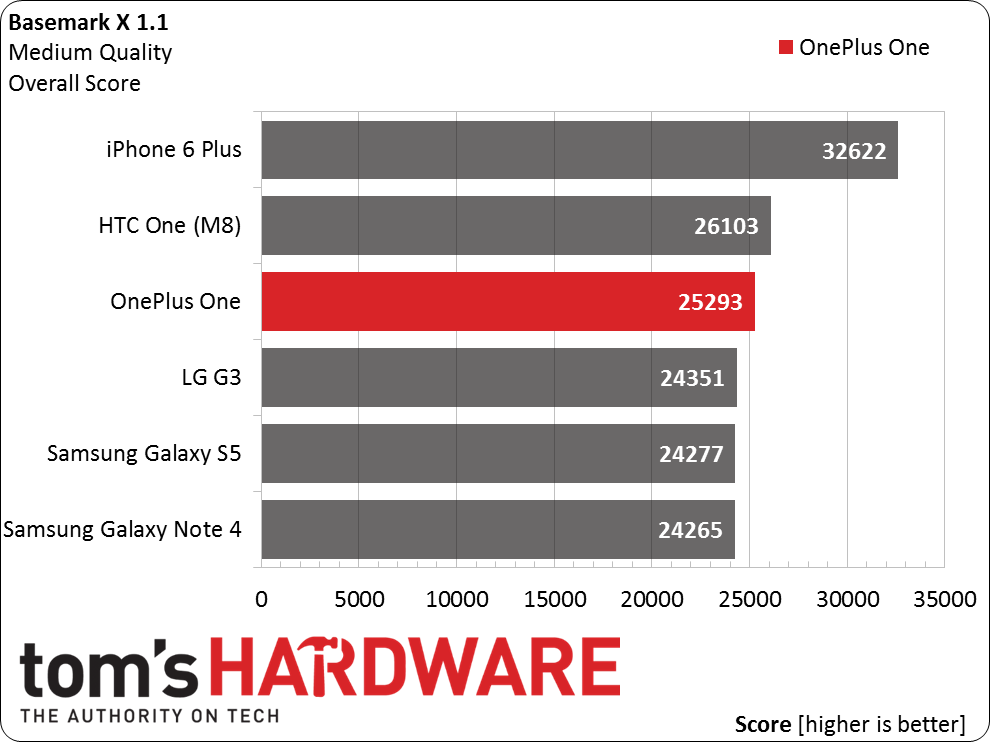
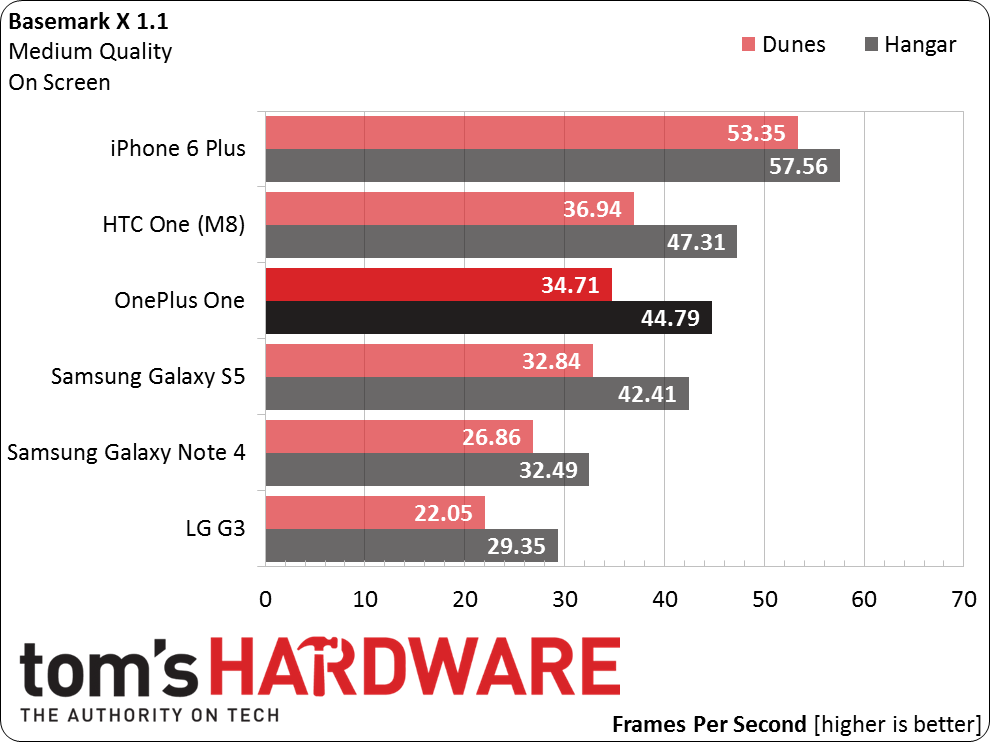
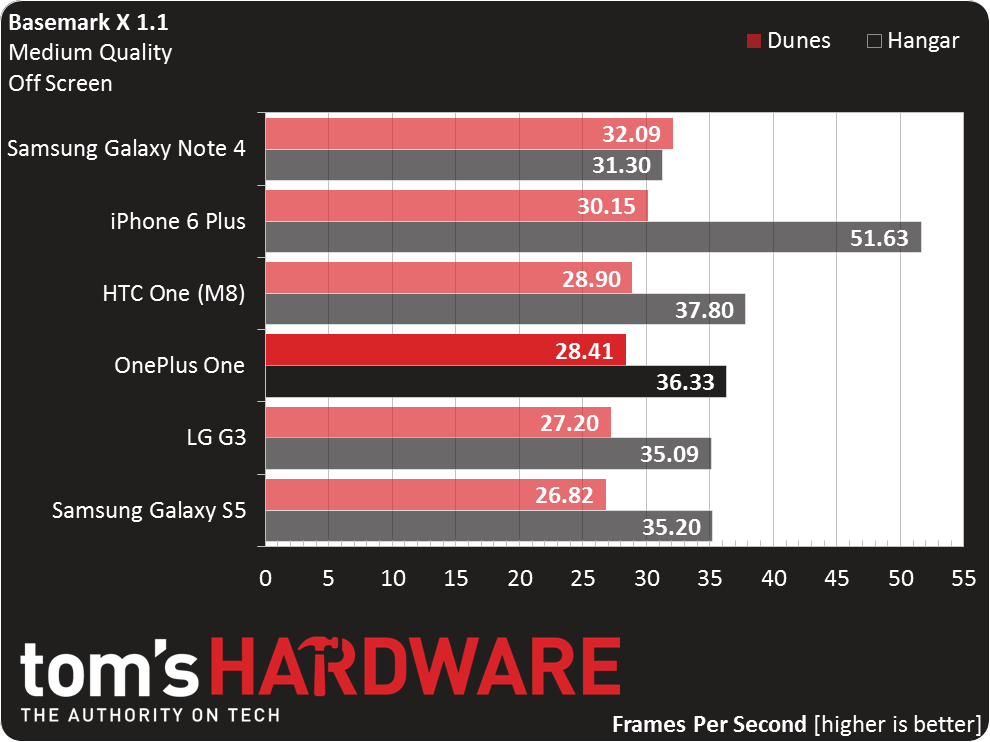
Note: The onscreen results for the iPhone 6 Plus are not accurate, since the current version of this benchmark doesn’t support their native resolutions. Instead, it renders at the native resolution of the 5s (640x1136). However, the Overall scores are not affected by this issue, since they are based on the offscreen rendering tests.
All of the Adreno 330 devices, including the OnePlus One, fall within 8% of each other when looking at the overall score. The Galaxy Note 4 fails to take advantage of its faster Adreno 420 GPU, falling to the bottom of the chart.
The onscreen results are grouped according to screen resolution. The three phones with 1080p displays form one group, while the QHD displays in the G3 and Note 4 burden their GPUs with more pixels.
Get Tom's Hardware's best news and in-depth reviews, straight to your inbox.
The offscreen results show the OnePlus One performing on par with the other Snapdragon 801 devices.
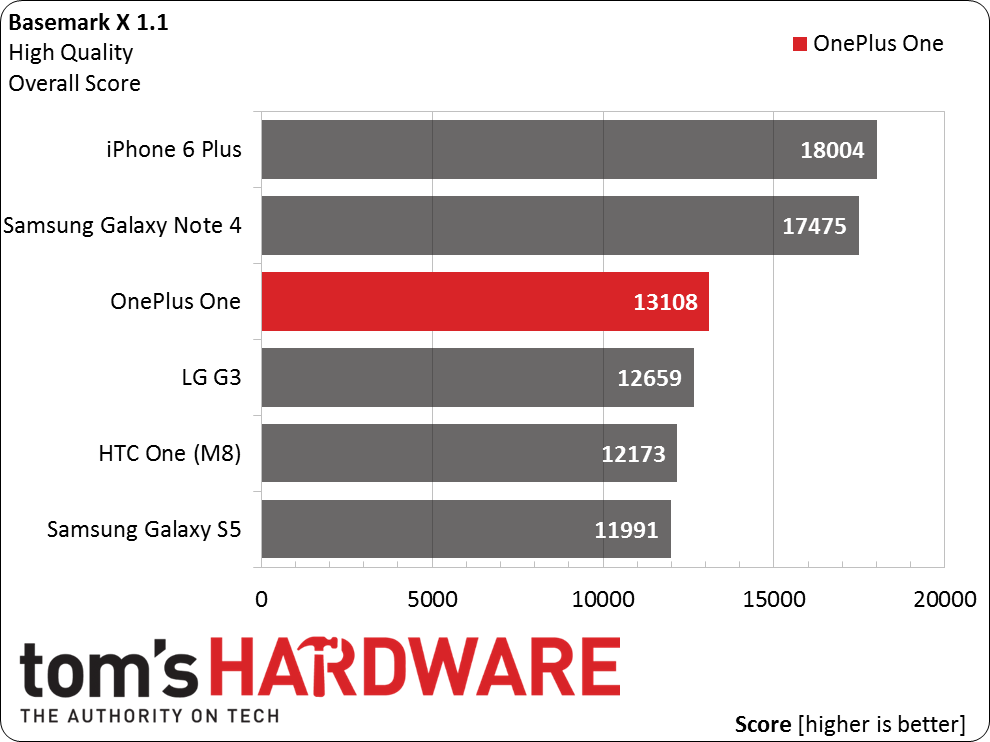
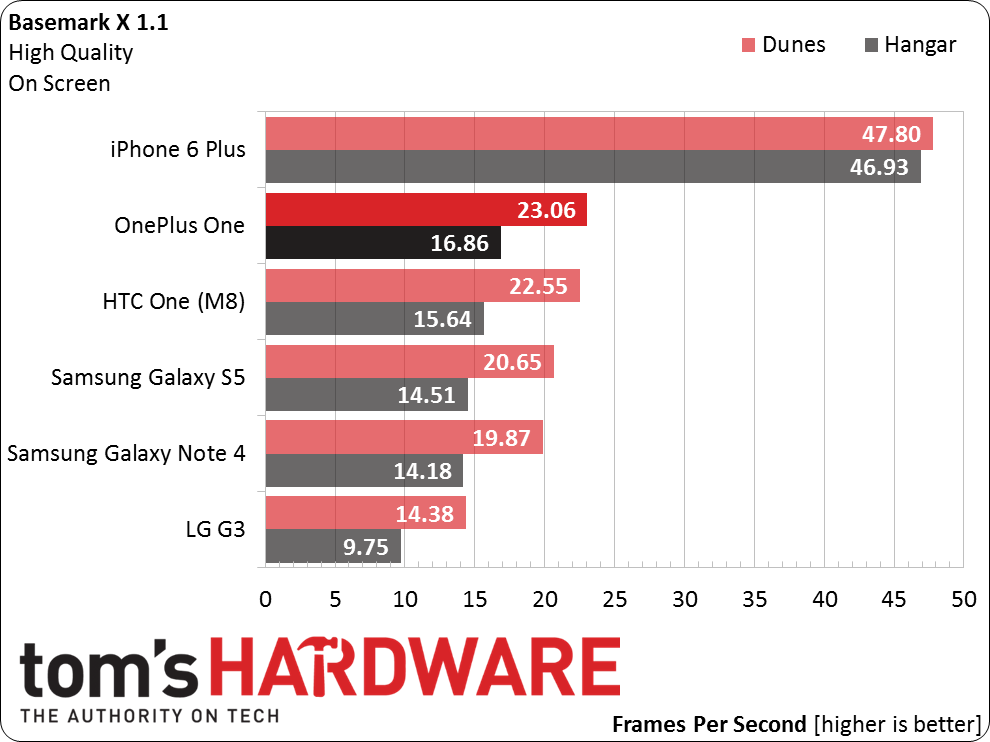
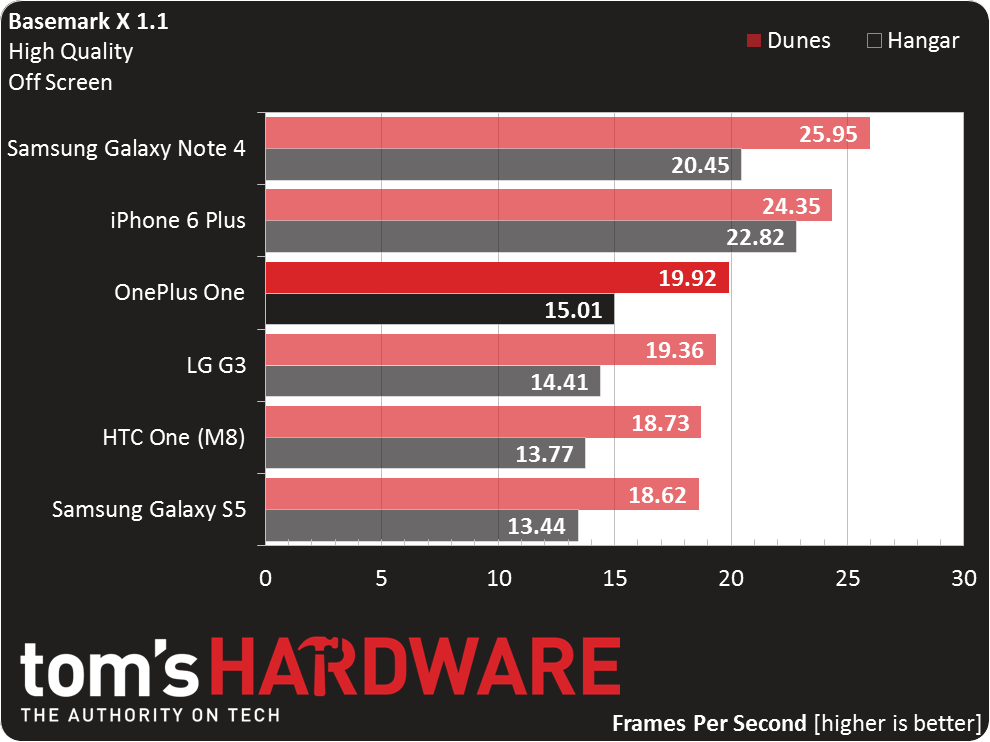
Moving to the high quality tests, we see the newer GPUs in the iPhone 6 Plus and Galaxy Note 4 pull ahead. The four devices using the Adreno 330 GPU only show a 9% spread, with the OnePlus One leading the pack.
GFXBench 3.0 Corporate
Kishonti GFXBench 3.0 is a cross-platform GPU benchmark supporting both the OpenGL ES 2.0 and OpenGL ES 3.0 APIs. It comprises both “high-level” game-like scenarios, along with more “low-level” tests designed to measure specific subsystems.
Among the high-level tests are Manhattan and T-Rex. Manhattan is a modern, complex OpenGL ES 3.0-based test, while the OpenGL ES 2.0-level T-Rex is a holdover from GFXBench v2.7.
The low-level tests include Fill, which measures fill rate by rendering four layers of compressed textures; Alpha Blending, a test that renders layers of semi-transparent quads using high-resolution, uncompressed textures; ALU, for measuring shader compute performance; and Driver Overhead, which measures the CPU overhead of the graphics driver and API by making a lot of draw calls and state changes.
See GFXBench 3.0: A Fresh Look At Mobile Benchmarking for a complete test-by-test breakdown of this benchmark.
The Manhattan offscreen results match perfectly with expectations. The iPhone 6 Plus and Note 4 pull ahead with nearly identical performance. All of the Snapdragon 801 devices perform the same.
With more pixels to push through its pipelines, the Note 4 and G3 see a significant drop in performance. The OnePlus One, HTC One (M8), and Galaxy S5 all essentially match their scores from the offscreen test. With 1080p displays, their onscreen resolution is the same as the fixed 1080p that’s rendered during the offscreen tests.
Once again, all of the Snapdragon 801 devices perform as expected but they’re 40% slower than the latest PowerVR GPU. The Note 4 however, experiences severe thermal throttling when running T-Rex, which takes a toll on its final score.
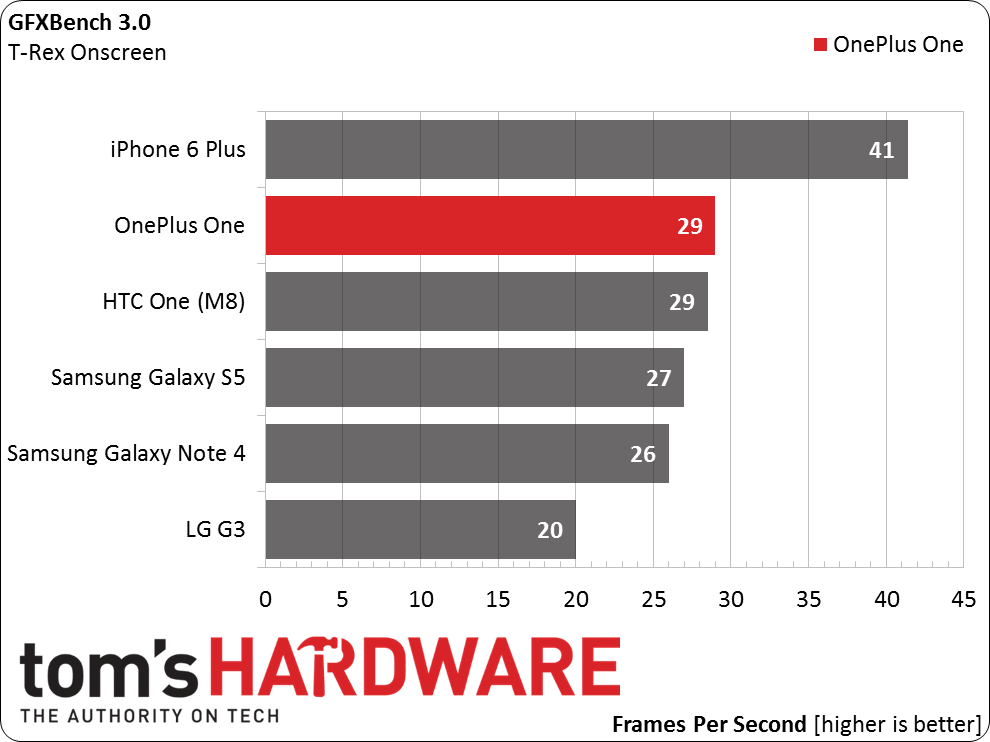
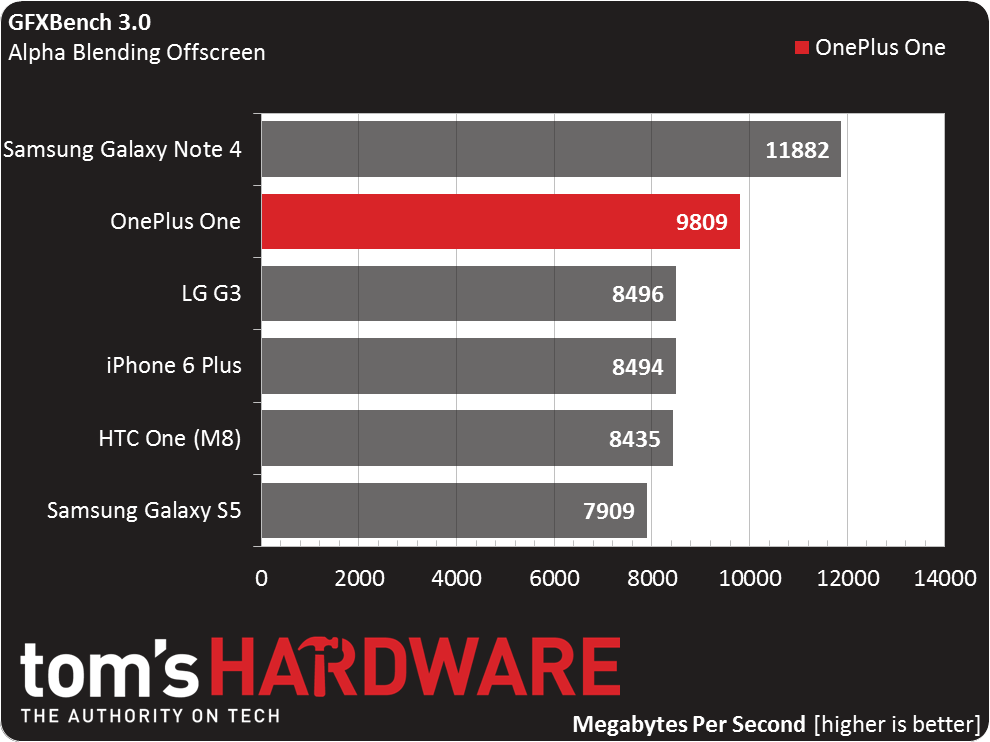
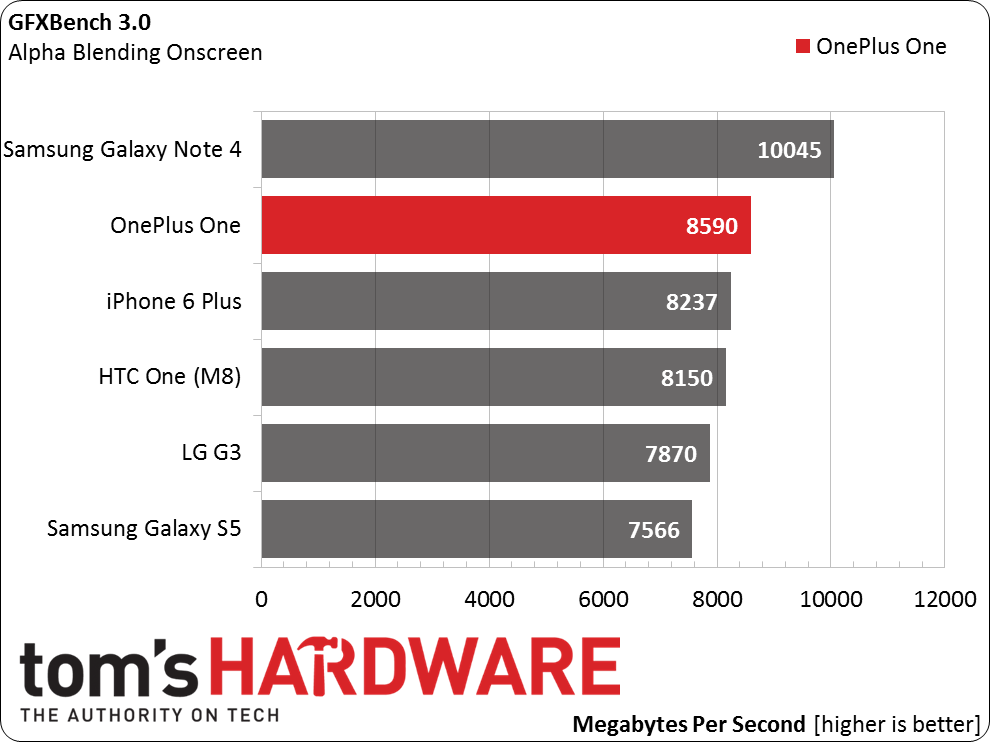
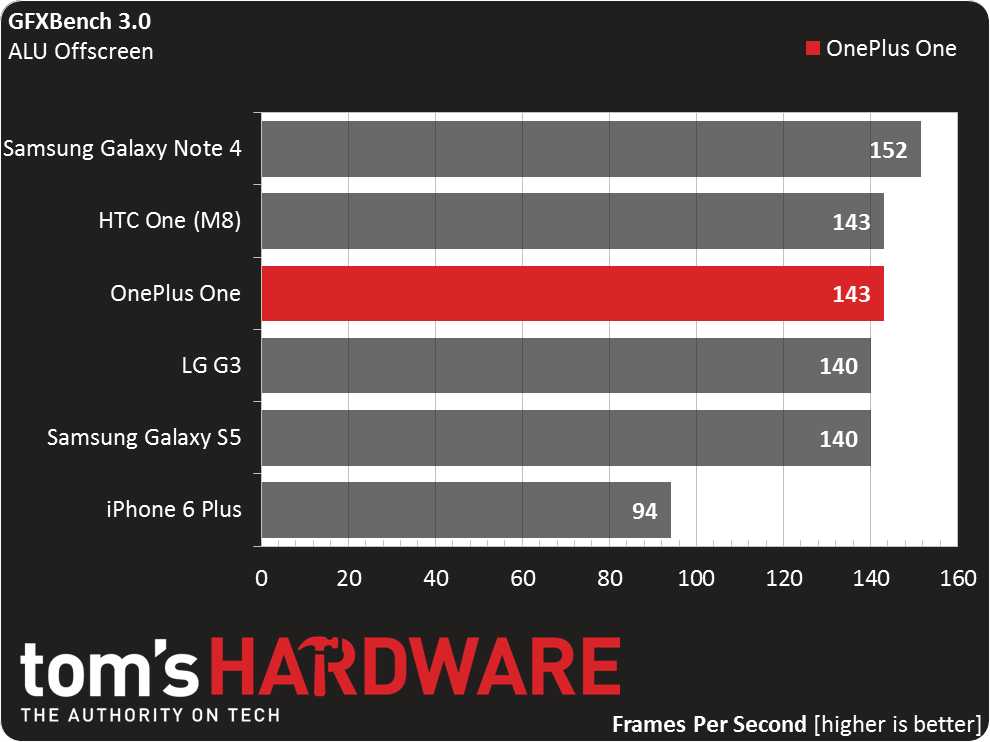
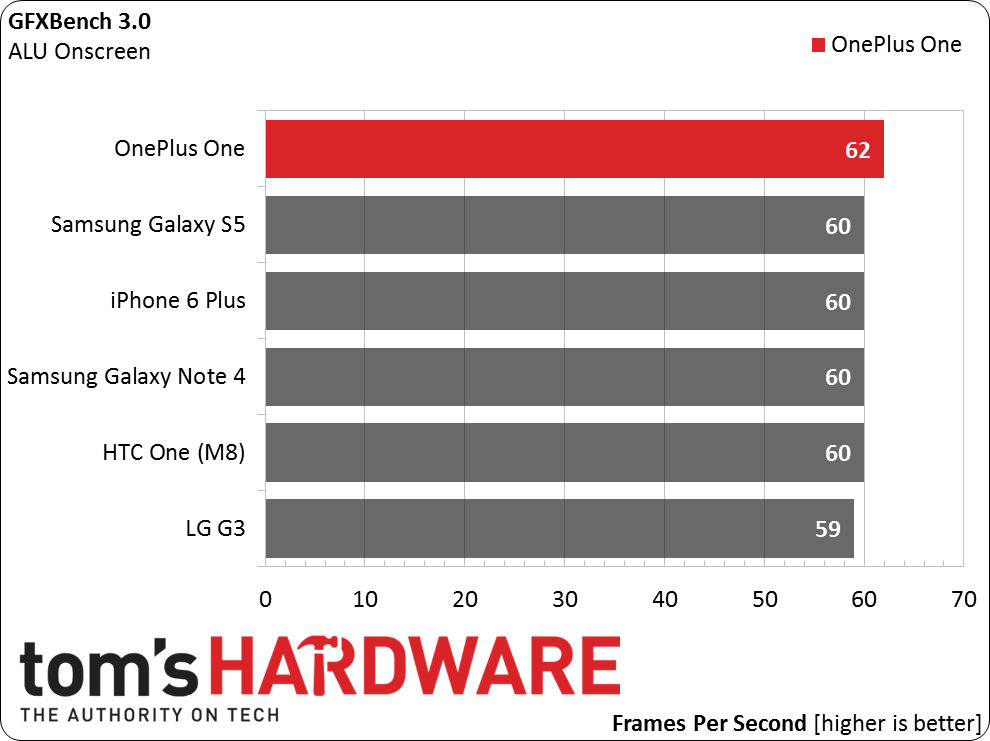
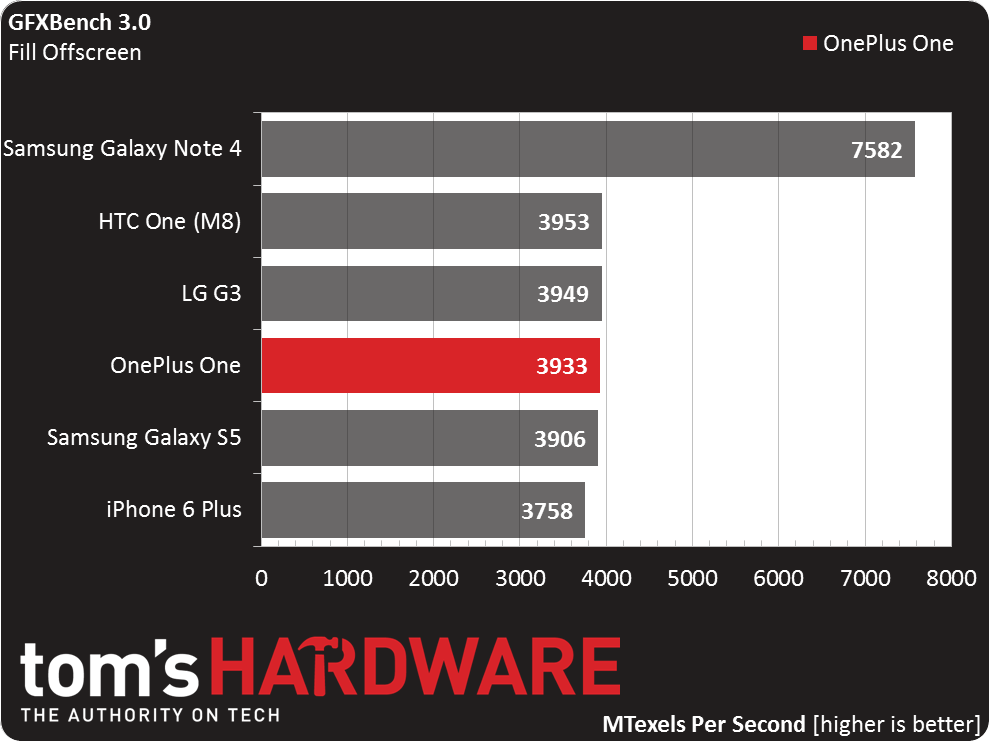
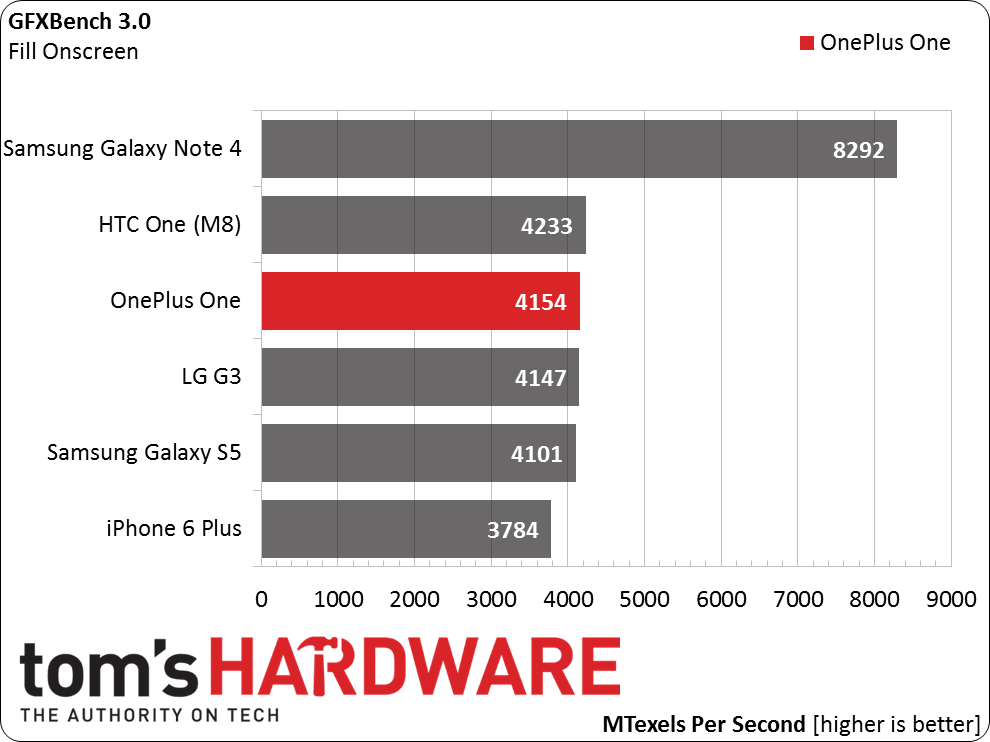
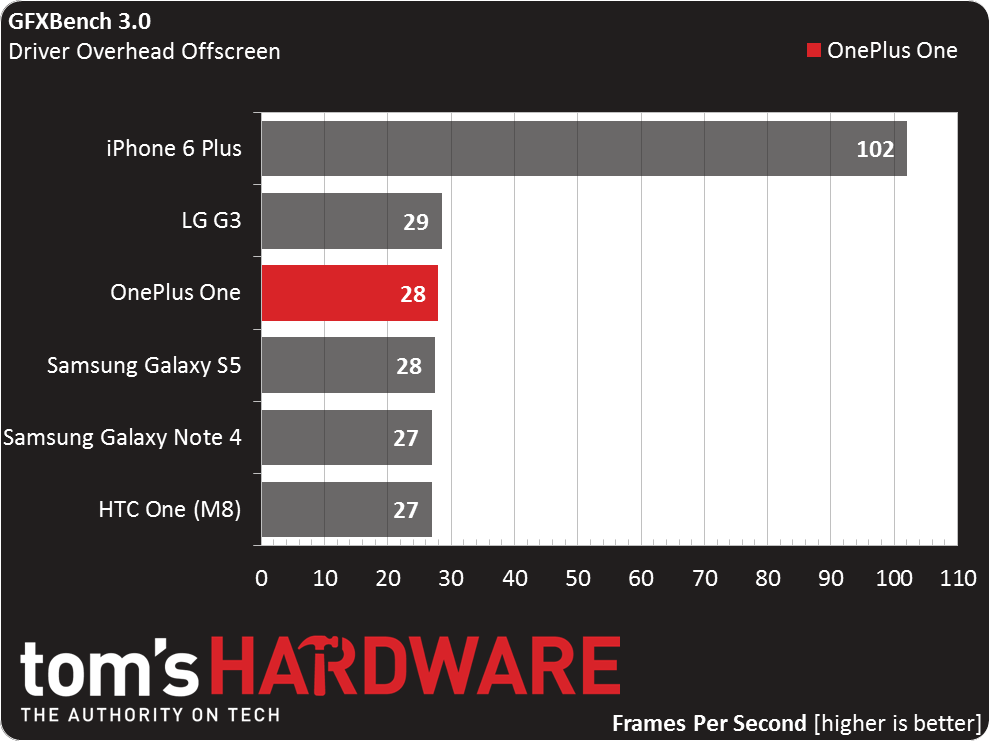
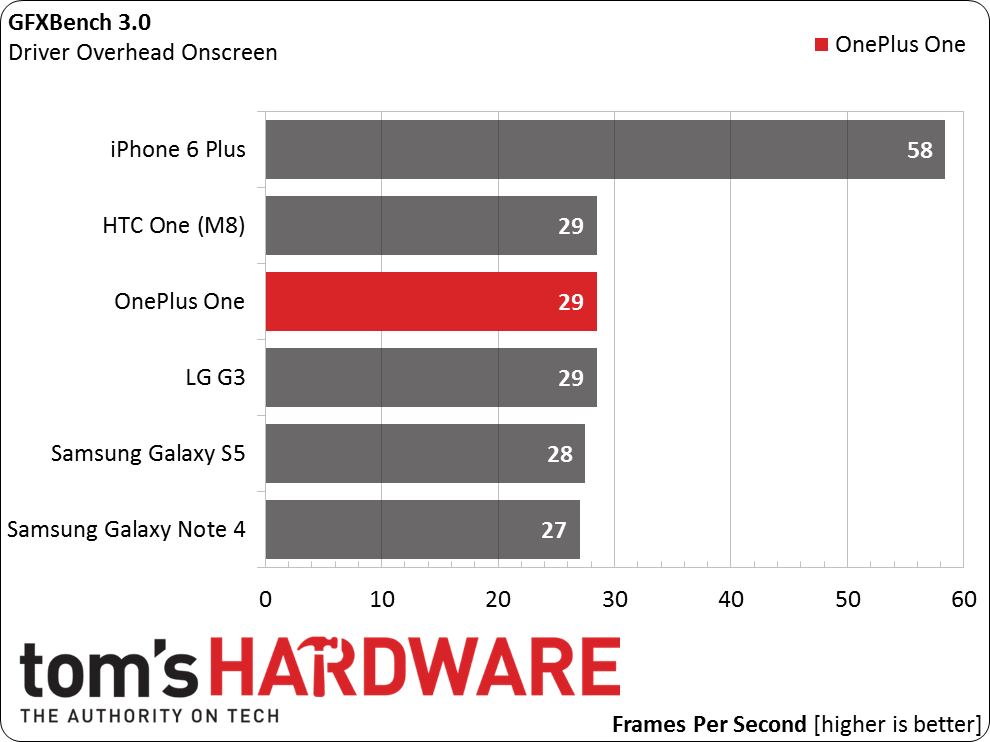
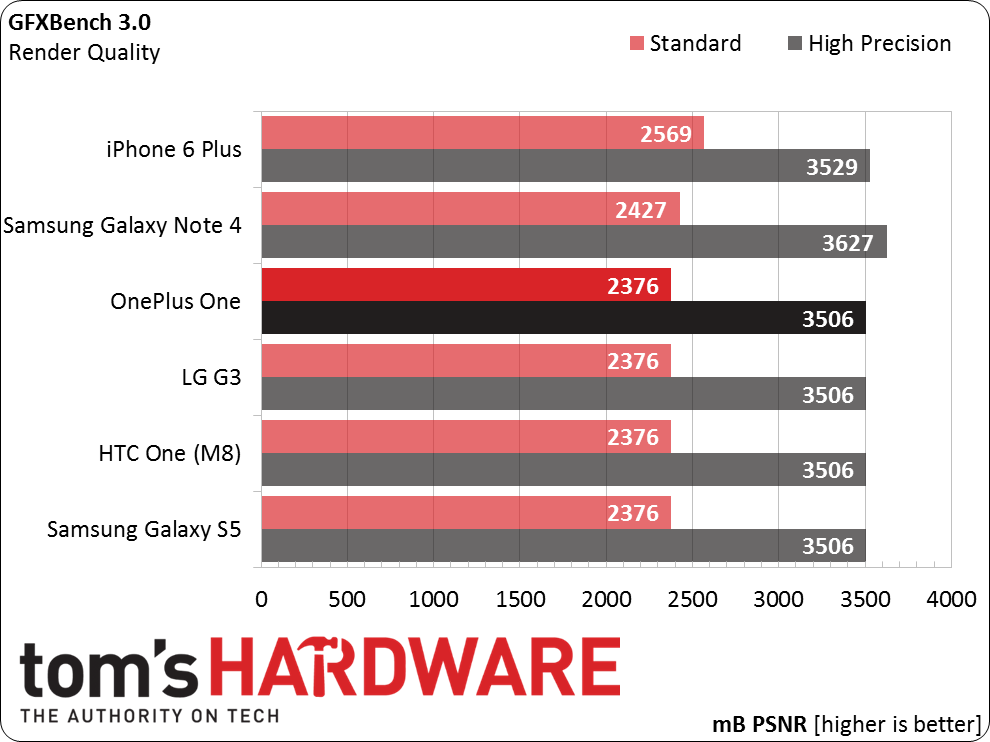
The low-level charts reveal a 15% advantage for the OnePlus One in the offscreen Alpha Blending test that fetches high-resolution, uncompressed textures from memory, suggesting a more efficient memory bus. The OnePlus One maintains a slight advantage in the onscreen Alpha Blending test. The Fill test also pulls textures from memory, albeit compressed, but the OnePlus One doesn’t show any advantage here. All of the other low-level tests show the OnePlus One with near identical performance to the other Snapdragon 801 phones.
Current page: Results: GPU Core Benchmarks
Prev Page Results: HTML5 And JavaScript Benchmarks Next Page Results: GPGPU Benchmarks-
MrEssesse You forgot to mention how the iphone 6 plus costs 299 $ with a 2 year contract, unlocked its around 700 $.Reply -
Mike Coberly So the device itself supports the CDMA bands, but is not compatible with one of the major CDMA carriers here in the US? What a shame. :( This could easily replace my now aging Galaxy Note 3.Reply -
Memory Ever Summary is all kind of noise voice out because it's a China phone.Reply
If this is a phone from Apple, people will only ask when they can buy it. They don't real care about of the specification.
This is the different. -
house70 Got one for my wife, she loves it, esp. that she doesn't have to keep an eye on the battery icon anymore. This thing will run forever... Getting another one for myself.Reply
For about USD 350 you can't really do any better. They could sell it for 550-600, but they won't.
CM12 (Lollipop- based) is around the corner.
Only thing they botched really big was the sales; this phone had a huge potential to when first launched, but making it almost impossible to buy doesn't help. -
uplink-svk As owner of three 1+1 phones I'm heavily dissapointed with this phone. I really loved the Crysis Music trailer, and there I decided to go for this phone.Reply
Things that really dissapointed me are:
- display is yellowish, at least was on all three pieces I owned
- it's made out of cheap plastics, I don't care it feels "great", I wanted metalic phone, like they said it's gonna be in the beginning
- one of the pieces was doing purplish photos
- it's way too big
- CM is fine, but still misses some of the basic features offered by 3rd party GUi from Samsung/HTC, which are in my eyes normal - RMAing the 1+1 is a hell, You need to send it back, wait and stuff, thank You, but no
In general I bought the first one for 290 euro, second one for 250 euro, and third one for 390 euro, which are pretty good prices in my country for these phones, and all were a disaster :\ -
rexter This is what Nexus 6 should have been - price-wise. Watch out Google here's OnePlus. Too bad, you'll need an invitation to get one, why not invite me instead if I give them my e-mail; this just show that the company don't have much stocks to share to every, I suppose? and that pink wall paper reminds me of Ubuntu. I like the black one if I can get my hands on one... or two.Reply -
Karksken Can you use this one as phone too or is it just a tablet(review). Smartguys please give us on smartPHONES also the real info as Phone quality, connection quality, e.a. info when you get the out of memory error when there is still a lot of mem available and you SIM is disconnected. How does the apps interact with the phone part.Reply -
D A The invites are easy to get with a little patience. I just bought three of them in the last tow weeks. All my invites I got where from google + where previous buyers are giving out the invites hourly. Jut go onto Google plus and do a search for "Oneplus Invite", then click "MOST RECENT". be patient and keep refreshing and be ready to respond to a post where someone is offering an invite... respond with your email address that you would like one. I did this for all three of my invites, there was only one person that did not send me the invite. I was able to get all the invites within an hour.Reply
